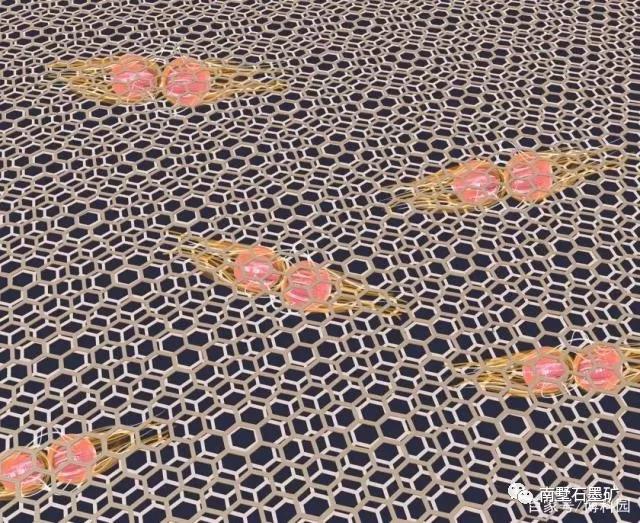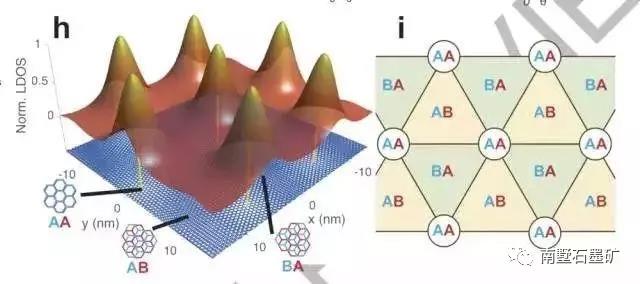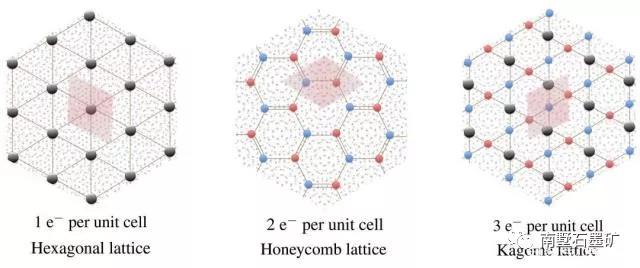The behavior of Mohr stripes and flat belts in the science of science and quantum physics called “Magic Angle” twisted bilayer graphene (TBLG) has attracted great interest from scientists, although many properties face heated debate. In a new study published in the journal Science Progress, Emilio Colledo and scientists in the Department of Physics and Materials Science in the United States and Japan observed superconductivity and analogy in twisted bilayer graphene. The Mott insulator state has a twist angle of about 0.93 degrees. This angle is 15% smaller than the “magic angle” angle (1.1°) calculated in the previous study. This study shows that the “magic angle” range of twisted bilayer graphene is larger than previously expected.
This study provides a wealth of new information for deciphering the strong quantum phenomena in twisted bilayer graphene for applications in quantum physics. Physicists define “Twistronics” as the relative twist angle between adjacent van der Waals layers to produce moiré and flat bands in graphene. This concept has become a new and unique method for significantly changing and customizing device properties based on two-dimensional materials to achieve current flow. The remarkable effect of “Twistronics” was exemplified in the pioneering work of the researchers, demonstrating that when two single-layer graphene layers are stacked at a “magic angle” twist angle of θ=1.1±0.1°, a very flat band appears. .
In this study, in the twisted bilayer graphene (TBLG), the insulating phase of the first microstrip (structural feature) of the superlattice at the “magic angle” was semi-filled. The research team determined that this is a Mott insulator (an insulator with superconducting properties) that exhibits superconductivity at slightly higher and lower doping levels. The phase diagram shows the high temperature superconductor between the superconducting transition temperature (Tc) and the Fermi temperature (Tf). This research led to great interest and theoretical debate on graphene band structure, topology and additional “Magic Angle” semiconductor systems. Compared with the original theoretical report, experimental research is rare and has just begun. In this study, the team conducted transmission measurements on the “magic angle” twisted bilayer graphene showing the relevant insulating and superconducting states.
An unexpectedly distorted angle of 0.93 ± 0.01, which is 15% smaller than the established “Magic Angle”, is also the smallest reported to date and exhibits superconducting properties. These results indicate that the new correlation state can appear in the “Magic Angle” twisted bilayer graphene, lower than the primary “magic angle”, beyond the first microstrip of graphene. To build these “magic horn” twisted bilayer graphene devices, the team used a “tear and stack” approach. The structure between the hexagonal boron nitride (BN) layers is encapsulated; patterned into a Hall rod geometry with multiple wires coupled to Cr/Au (chromium/gold) edge contacts. The entire “Magic Angle” twisted bilayer graphene device was fabricated on top of the graphene layer used as the back gate.
Scientists use standard direct current (DC) and alternating current (AC) locking techniques to measure devices in pumped HE4 and HE3 cryostats. The team recorded the relationship between the device’s longitudinal resistance (Rxx) and the extended gate voltage (VG) range and calculated the magnetic field B at a temperature of 1.7K. Small electron-hole asymmetry was observed to be an inherent property of the “Magic Angle” twisted bilayer graphene device. As observed in previous reports, the team recorded these results and detailed the reports that have been superconducting so far. The characteristic “Magic Angle” twists the minimum torsion angle of the bilayer graphene device. With a closer examination of the Landau fan chart, the researchers gained some notable features.
For example, the peak at half fill and the two-fold degeneracy of the Landau level are consistent with the previously observed Moment-like insulation states. The team showed a break in the symmetry of the approximate spin valley SU(4) and the formation of a new quasi-particle Fermi surface. However, the details require a more detailed inspection. The appearance of superconductivity was also observed, which increased Rxx (longitudinal resistance), similar to previous studies. The team then examined the critical temperature (Tc) of the superconducting phase. Since no data was obtained for optimal doping of superconductors in this sample, the scientists assumed a critical temperature of up to 0.5K. However, these devices become ineffective until they are able to obtain clear data from the superconducting state. To further investigate the superconducting state, the researchers measured the four-terminal voltage-current (V-I) characteristics of the device at different carrier densities.
The resistance obtained shows that super current is observed over a larger density range and shows the suppression of super current when a parallel magnetic field is applied. To obtain insight into the behavior observed in the study, the researchers calculated the Moir band structure of the “Magic Angle” twisted bilayer graphene device using the Bistritzer-MacDonald model and improved parameters. Compared to the previous calculation of the “Magic Angle” angle, the calculated low energy Moire band is not isolated from the high energy band. Although the device’s twist angle is smaller than the “magic angle” angle calculated elsewhere, the device has a phenomenon that is strongly related to previous studies (Mort insulation and superconductivity), which physicists found to be unexpected and feasible.
After further evaluating the behavior at large densities (the number of states available on each energy), the characteristics observed by the scientists are attributed to the newly emerging associated insulation states. In the future, a more detailed study of density of states (DOS) will be conducted to understand the odd state of insulation and to determine if they can be classified as quantum spin liquids. In this way, scientists observed superconductivity near the Mox-like insulating state in a twisted bilayer graphene device with a small twist angle (0.93°). This study shows that even at such small angles and high densities, the effect of electron correlation on the properties of moiré is the same. In the future, the spin valleys of the insulating phase will be studied, and a new superconducting phase will be studied at a lower temperature. Experimental research will be combined with theoretical efforts to understand the origin of this behavior.
Post time: Oct-08-2019



